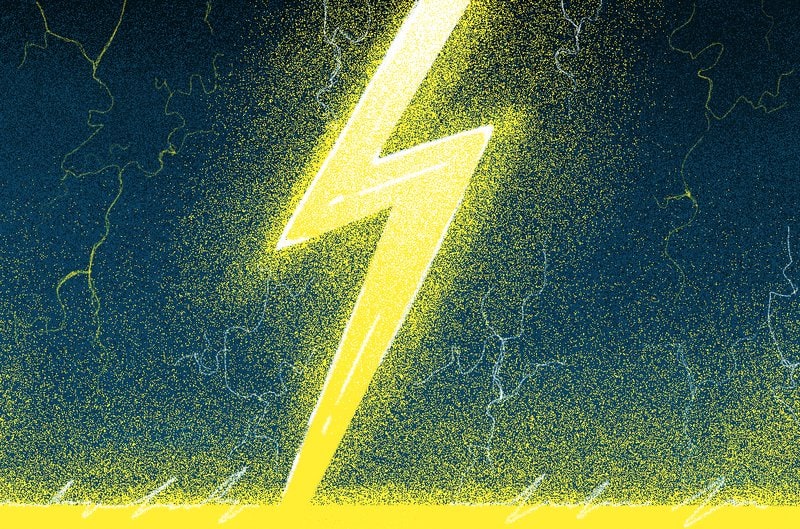What Implementation of Bitcoin’s Lightning Network Should You Pick?

A cohort of Lightning developers held a roundtable discussion at Bitcoin 2022 on the differences between node options available to users.
At Bitcoin 2022, a panel of top-tier developers sat down on the Open Source Stage to discuss the different options available to users who wish to use the Lightning Network, an overlay network on top of the Bitcoin blockchain that brings ultra-fast and super-cheap bitcoin payments.
“By lifting things off the Bitcoin chain, we get this freedom to experiment and explore different tradeoffs,” said Christian Decker, Lightning protocol engineer at Blockstream.
In addition to Decker, the roundtable conversation also included Olaoluwa Osuntokun, CTO of Lightning Labs and Matt Corallo, Lightning developer at Spiral. The panel was moderated by Vivek, corporate development manager of Blockstream.
Similar to Bitcoin, the Lightning Network leverages the concept of nodes running specific software to communicate with each other and construct and route payments. However, instead of having a de-facto standard node software like Bitcoin Core, Lightning brings a slew of options to the table, with the sole requirement that they all implement the same basic features to ensure they can communicate with each other.
The fact that there exists different Lightning implementations means that there are different offerings available to users, and they can pick which node to run based on their specific needs. However, that can be intimidating and confusing for users as they tip-toe into Bitcoin’s second layer. Among the many different options, prominent Lightning node offerings include Lightning Labs’ LND, Blockstream’s Core Lightning, ACINQ’s Eclair and Spiral’s LDK.
LND
Lightning Labs’ offering, LND, is known for its extensive documentation. This makes it easy for developers to play around with the software and create applications that communicate with and extend the functionality of the implementation.
Due to its focus on developer integration and the development of applications on top of it, as well as on an easier setup scheme, LND has seen the largest community involvement among all implementations and currently runs the majority of all network nodes.
LND also boasts arguably the largest full-time development team. As a result, the team has managed to build a plethora of value-added services around LND, such as Aperture and the liquidity services Lightning Loop and Pool.
Osuntokun said that despite being a new technology, Lightning is being recognized more broadly and plenty of research papers have been published recently.
“It’s really cool to see people recognizing this is something worth working on,” he said.
From research comes development, and Lightning Labs also recently proposed Taro, a new protocol that leverages Lightning to transfer assets on Bitcoin, which can be issued with Taproot.
“Having assets at the edges of the network, you retain the security of bitcoin and increase the network effects,” Osuntokun said.
Core Lightning
Core Lightning, previously known as c-lightning, is a flexible and lightweight implementation of the Lightning Network, allowing it to be run in low-spec devices. Blockstream’s approach seeks to empower users to make Core Lightning their own by using plugins that increment the solid foundation that the node provides. Core Lighting also places heavy emphasis on BOLTs, the specification documents that define the basic features of all implementations.
“Core Lightning has always been the ‘lego block’ kind of node where you can swap parts. We’ve gotten feedback from researches [saying] they could just get a plugin and add it to their nodes to test things quicker,” Decker said, commenting on the flexibility of Core Lightning.
Blockstream’s implementation was built from the ground up, leveraging the base specification documents of Lightning technology to create a fully-compliant software. Core Lightning focuses on doing the basic with security and efficiency, leaving it up to the user to add what they need on top with the plugins. A downside of this approach is that Core Lightning currently requires a little bit of work from the user to get up and running.
Given its efficiency and lightweight footprint, however, Core Lightning is better suitable for low-specification devices. Blockstream’s implementation also has developed a set of new features that extend the current functionality of the base specifications, which are often draft specifications or spec proposals, including collaborative channel openings, liquidity ads and BOLT 12.
LDK
LDK, on the other hand, brings an approach of abstraction, lifting the burden of low-level Lightning technology details from developers so they can easily and quickly add Lightning Network capabilities to the applications they already have.
Instead of providing a fully-fledged node, LDK seeks to bring a tool kit to help people building on Lightning.
“LDK has some prebuilt things, however you want to sync the blockchain we have an API similar to what you’d be doing to sync the blockchain,” Corallo said. “LDK doesn’t take a stance on what people should or should not do.”
As mentioned earlier, LDK abstracts low-level concepts of Lightning development to enable easier integration of Bitcoin’s scaling protocol. By abstracting the networking and database interfaces, for instance, LDK allows developers to run LDK inside a browser that requires WebSockets and to enjoy more flexibility when it comes to storing and managing Lightning state data.
“You can take LDK and run it on [a browser window] today, it’s super lightweight, costs nothing, works great,” Corallo said.
Cash App, the payments application from financial services company Block, Inc., recently added Lightning Network functionality leveraging LDK. Spiral is also a subsidiary of Block, though it is an independent organization.
Bitcoin 2022 is part of the Bitcoin Event Series hosted by BTC Inc, the parent company of Bitcoin Magazine.
The post What Implementation of Bitcoin’s Lightning Network Should You Pick? appeared first on BTC Ethereum Crypto Currency Blog.
Text source: BTC Ethereum Crypto Currency Blog










